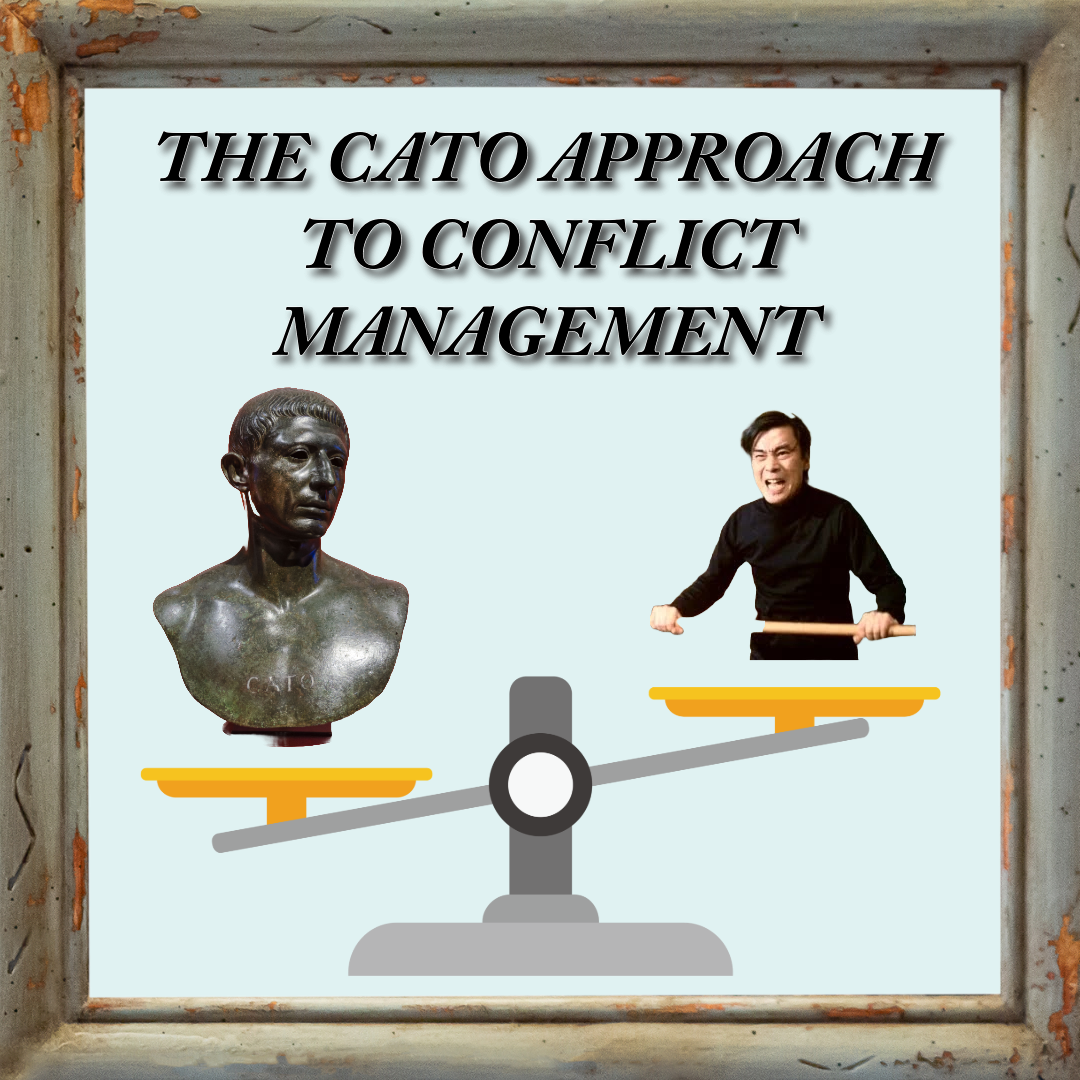
Today’s Morning Buzz is by Greg LeBlanc, Assistant Town Manager of the Town of Snowmass Village, Colo. Connect with me on LinkedIn.
What I’m watching: ER
A hobby I enjoy: Skate skiing
What’s my favorite bird? Stellar’s Jay
I have two colleagues who reference a figure known as Cato. Both colleagues pontificate on his relevance to culture, history, philosophy, and modern management. I have been in the room on several occasions when one is telling a story of Cato’s relevance to contemporary issues in the workplace, such as conflict resolution. Such tutelage seldom resonates with my other coworkers as when these two start speaking about the wisdom of Cato.
The problem? Neither colleague is talking about the same Cato.
In the annals of history exists two Catos. The first, Cato the Younger, was an influential conservative Roman senator during the late Roman Republic. The second is Cato Fong (portrayed by Burt Kwouk), the fictional manservant of the Inspector Jacques Clouseau, from the comedy films, The Pink Panther. Despite their differences, both Cato the Younger and Cato Fong can teach us about conflict management.
Who is Cato?
Both Catos exist in perfect cultural and historical relevance; each individual’s unique style is in harmonic balance with the other’s. Cato the Younger is credited for his conservative principles that were focused on the preservation of what he saw as traditional values in decline. Cato the Younger was a stoic of his time, believing that virtue was the path to a life well lived. His belief in stoicism aided in his rise to political power, opposing the political wills of his contemporaries – Julius Caesar and Pompey.
In The Pink Panther films, Cato Fong was trained to attack Inspector Clouseau regularly to keep him alert and skilled in combat. Clouseau hired Cato to keep him in peak mental and physical condition, and Cato put a lot of effort into taking his employer by surprise. Their relationship is love-hate because Cato is so successful at his job that Clouseau never really feels safe. The relationship between Cato and Clouseau is humorous because their fights are long and raucous, often resulting in the destruction of furniture. Each fight is almost always interrupted by the telephone ringing, at which point Cato and Clouseau become civil again.
What Can (one of the) Cato(s) Teach Us About Conflict Resolution?
Local government leaders can learn a lot about conflict resolution from the teachings of each Cato. I will submit that the approach of either Cato is superior to the other’s, but I will propose that both Catos are effective in their unique style.
Conflict resolution is the informal or formal process that two or more parties use to find a peaceful solution to their dispute.
Leaders in the public sector will inevitably face the need for conflict resolution in their careers. Conflict resolution is commonly needed to settle disputes between two members of an organization, between oneself and a colleague, or between two parties, such as a client and a municipality, over a missed deadline. While conflict is inevitable, good conflict resolution tools are critical to our successes.
Overconfidence, escalation, and avoidance are natural tendencies for individuals addressing conflict. Those who prefer these tactics risk harming the other party or extending the length of time it takes to reach resolution. Cato the Younger might approach conflict in this manner. His stoicism would naturally lead him to avoidance, which in turn might escalate the issue into something bigger than necessary, which is a common mistake of the overconfident. This contrasts with the approach of Cato Fong, who would attack the issue head on, reaching resolution (however messy) in a shorter time frame. While both parties may reach amiability sooner using this Cato’s method, it risks offending the opposing party with such aggressive tactics.
Leaders who follow Cato the Younger’s approach in these situations are likely to risk underestimating the gravity of the conflict before them. By avoiding conflict, these leaders risk not solving issues at all, and this may frustrate colleagues. Leaders who tackle issues like Cato Fong risk harming relationships by moving quickly and aggressively at the issue. Their overconfidence for assuming a resolution might be made quickly may come across as arrogant or insensitive to the core issue.
Negotiation, mediation, and arbitration are common tactics for resolving conflict. Each of these methods describe a facilitated setting in which conflict can be resolved. All three are common in the business world and, by extension, the public sector. Negotiations occur daily, whether it is on a contract for services, or in a job interview. Mediations and arbitration happen frequently when a neutral third party, such as a judge or a jury, is needed to help settle an issue.
Leaders who mirror the style of Cato the Younger are less likely to compromise or craft creative solutions in negotiations, mediations, and arbitration. Their approach makes them difficult to communicate with in conflict resolution because their views do not deviate from deeply-rooted virtuous standings. Comparatively, leaders who mirror the style of Cato Fong are more likely to reach resolution through many rounds of well-thought-out creative solutions. These leaders know where their line in the sand is and make well-informed guesstimates as to where the line exists for their adversaries. This analytical approach allows them to be creative when finding a solution.
Which Cato Are You?
Conflicts are inherently difficult to navigate. Emulating the styles of either Cato the Younger or Cato Fong can help leaders navigate complex conflicts. However, knowing which Cato to emulate will depend on the type of conflict and your natural style. Since no two conflicts are the same, leaders must recognize when it is best to exhibit conservative stoicism, like Cato the Younger, and when it is best to exhibit strategic erraticism, like Cato Fong. Whether a leader chooses one style or another is a reflection of their ability to think critically about addressing issues.
